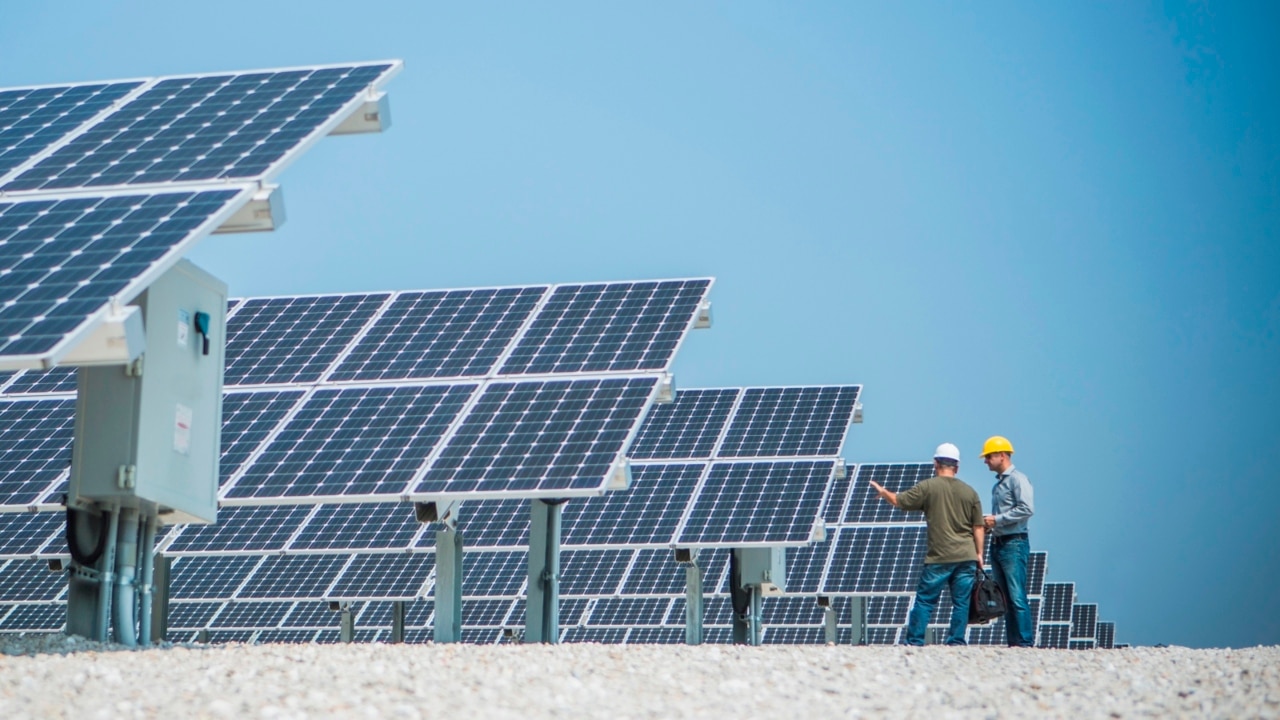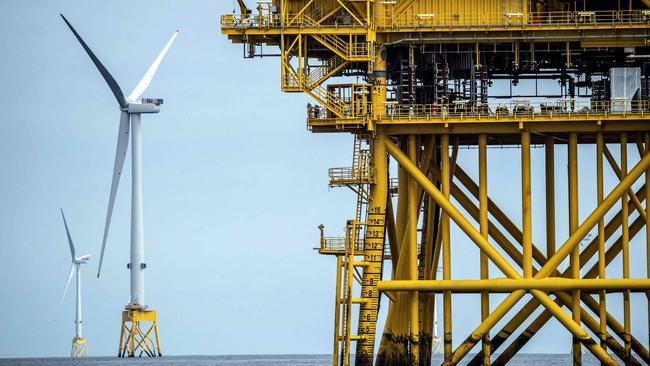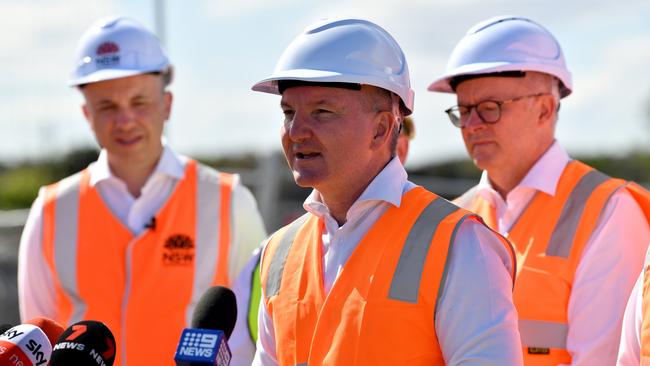Global heavyweight BlackRock targets Australian offshore wind and batteries
The world’s largest asset manager is vying to join the rush to develop offshore wind in Australia as it seeks to transition away from fossil fuels.

BlackRock is targeting investing in the country’s burgeoning offshore wind industry and developing new batteries, as the world’s largest asset manager looks for new exposure to Australia’s energy transition.
BlackRock on Tuesday said it had raised more than $500m from investors for one of the world’s largest batteries, a key component of Australia’s plan to replace Origin Energy’s Eraring coal power station in 2025. Eraring is one of Australia’s biggest generating coal power stations, accounting for about 25 per cent of NSW’s energy needs.
Charlie Reid, BlackRock’s co-head of climate infrastructure in the Asia-Pacific, said the asset manager has plans for further expansion, headlined by a desire to secure a role in the country’s offshore wind industry.
“We have Akaysha that has around two gigawatts of capacity in Australia and we are active outside. We will have an announcement in the coming months in terms of taking batteries across the National Electricity Market into construction,” Mr Reid told The Australian.
“We are keen on supporting a broader energy transition in Australia so we have JOLT, our EV charging company. We’re also keen on small scale, residential, commercial industrial solar and batteries, like the model we are operating through solarZero in New Zealand. We’re also keen to play a role in the offshore wind sector in Australia.”
Australia has earmarked offshore wind as central to its plans to wean off coal, still the largest source of electricity.
Victoria is Australia’s most ambitious state towards the industry, placing offshore wind at the heart of its energy plan. In 2021, the southern state set a target of generating about 20 per cent of its energy needs from offshore wind within a decade.
The target then doubles to 4GW by 2035 and 9GW by 2040. In all, Victoria sees potential for 13GW of offshore wind capacity by 2050, five times the current renewable generation in Victoria.

The target has drawn a plethora of some of the world’s largest renewable energy developers and local heavyweights including Origin Energy and AGL Energy, all vying for a piece of the lucrative market.
The National Offshore Petroleum Titles Administrator is currently assessing more than three dozen applications for the first offshore wind site in Gippsland.
The Australian understands BlackRock was not one of the applicants, indicating that the asset manager is interested in partnering with another developer.
Mr Reid declined to comment on potential partners.
“With offshore wind, it makes sense to be diversified and we are keen to play a role across Victoria and NSW,” Mr Reid said.
BlackRock is unlikely to be short of interest. Offshore wind projects are typically equivalent in size to coal power stations, but can cost several billions of dollars. While many of the developers have large, well-resourced backing – BlackRock’s access to capital will make it an attractive partner.
BlackRock’s interest in Australia will be welcomed by the federal and state governments. Australia has set an aggressive target of having renewable energy provide more than 80 per cent of the country’s electricity by 2030, but the pace of new developments has been frustratingly slow.
The rate of building dispatchable storage capacity, such as pumped hydro and batteries – which can prop up the grid when the sun is not shining or the wind is not blowing – has been particularly slow.
Work on BlackRock’s mega battery in NSW, however, is progressing on schedule, Mr Reid said.
“We’ve started construction on site on time. Most of the large equipment will be delivered in November and we will be fully operational at the beginning of 2025,” Mr Reid said.
The timetable for work is important amid market jitters about whether Australia will have developed sufficient capacity to allow for the retirement of Eraring.

The so-called Waratah Super Battery will have an active power capacity of 850 megawatts and guaranteed usable energy storage capacity of at least 1680 megawatt hours, larger than initially planned and nearly three times the largest battery operating in Australia to date.
But most of the time, the Battery Energy Storage System (BESS) will remain in standby mode as a “virtual transmission line”, ready to respond when the power system experiences a shock, such as a lightning strike or bushfire.
BlackRock’s interest and access to capital would hasten the build of new batteries. Mr Reid said he is optimistic about Australia’s prospects, but the firm’s interest in batteries is explained by the country’s trouble in building new transmission lines.
“We are currently not focused on utility scale solar and wind mainly because of the transmission risks both in terms of getting connected to the grid and availability of connections so you are curtailed once you are connected to the grid. Batteries provide a solution to this,” Mr Reid said.
High-voltage transmission lines are shaping as Australia’s biggest bottleneck to new renewable energy developments. The country’s energy market operator has pleaded for urgent work on five transmission lines, but work remains slowed by community opposition.
States have moved to quell opposition by offering ever larger compensation packages, but pockets of resistance continue.








To join the conversation, please log in. Don't have an account? Register
Join the conversation, you are commenting as Logout